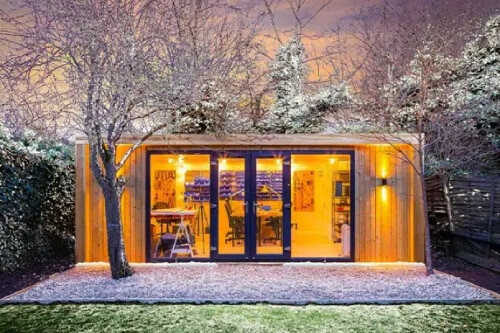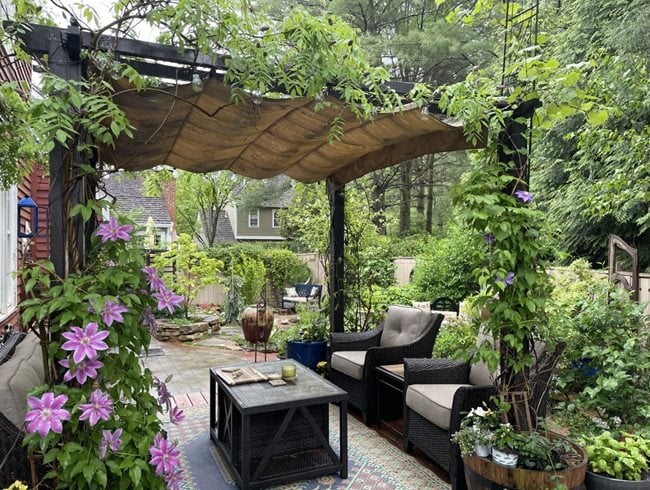Handy Facts On Planning Permission On Garden Conservatories
Wiki Article
How Much Planning Permission Do You Require For A Garden Room Etc.?
When planning to build gardens, conservatories, outhouses, garden offices or extensions, highways considerations are a significant factor that can affect the need for planning permission. Here are some of the most important aspects to consider. Sight lines and visibility:
If the structure is obstructing the view of drivers entering or exiting the property, or affects the view lines at junctions or bends in the road, then planning permission is required. The authorities for planning will assess whether or not the structure is a danger to the road.
The highway is close to the highway
Structures built close to the highway, such as extensions to the front garden or that are close to the street, generally require permission to plan. In order to ensure that the construction doesn't interfere with highway safety there are distance rules.
Access and Egress
Planning permission is needed for any changes to points of access. This includes creating new driveways, or altering the existing ones to allow for the new design. This will ensure that access and egress are secure and don't disrupt traffic flow.
Parking Arrangement:
Planning permission could be required if a proposed construction affects parking spaces or requires extra parking. The planning authorities will determine whether the development is able to provide enough parking spaces for the location and if there are no parking problems on the street.
Traffic Generation
Planning permission is needed to permit any development likely to boost traffic levels like the use of a garden office by a business with clients visiting. The traffic levels in the vicinity and road safety are analyzed.
Effect on Pedestrian Access
If the proposed structure would encroach on pavements or pedestrian pathways, planning permission is required. To ensure safety for pedestrians and access, it is essential to not block the pathway.
Construction Effects on Highways
The effect of construction activities on highways, which includes the movement of heavy vehicles, as well as temporary obstructions could require approval from the planning authority. The planning authority may set conditions on construction in order in order to limit disruptions to roads.
Drainage and Runoff of Water:
Another thing to take into consideration is the development's effect on drainage or water runoff. Planning approval ensures that the proposed structure will not cause more flooding or drainage issues that could impact the road.
Street Furniture and Utilities
The planning permission must be obtained when the proposed construction will affect the street furniture, underground utilities, or both (e.g. water cables, pipes, etc.). The planning authority will coordinate with relevant agencies to address these concerns.
Compliance with Highway Authority Guidelines:
The local highway authority might have specific guidelines for development near highways. Planning permission allows for compliance with safety rules for roads.
Noise and Disturbance From Traffic
If the new structure will increase noise or disturb traffic (e.g. gardens offices that are visited or receive deliveries) Planning permits will have to be sought to evaluate these effects and then to reduce their effects.
Public Transport Accessibility
The planning permission must be obtained when the development could affect infrastructure for public transport, such as train stations and bus stops. Impact on public transport users and the integration with the transportation system will be taken into consideration.
In the end, highways concerns play a large role in the process of getting permissions to plan for gardens and conservatories. Making sure that the proposed development is not a threat to the safety of traffic flow, road safety pedestrian accessibility, as well as the overall infrastructure is essential. Talking with the local planning authority and the highway authority at the beginning of the planning process can aid in addressing these concerns and ensure compliance with all relevant laws. Follow the best garden office for more tips including insulated garden buildings, garden outhouse, garden rooms in St Albans, outhouse building, garden room vs extension, do you need planning permission for a garden room, garden rooms in St Albans, garden rooms, best heater for log cabin, best electric heater for cabin and more.

In Terms Of Listed Buildings, What Kind Of Planning Permit Are You Required To Apply For Garden Rooms Etc?
Building gardenrooms, conservatories and outhouses and extensions or gardens on the grounds of listed buildings requires special considerations. Stricter regulations also apply. The following are key considerations when preparing such projects.
Any extension, alteration or construction that falls within the boundaries of a listed structure typically requires listed building consent along with planning permission. This is because changes can alter the appearance and importance of the listed property.
Impact on historical character:
This includes garden rooms and outbuildings. This includes garden structures and outbuildings.
Design and Materials
The new structure and materials should be in line with the historic and architectural value of the historic building. Planning permission is required if the construction and materials aren't traditional.
The building is located close proximity to the listed building
It is important to consider the potential impact on any future structures built near the heritage building. The building's character will not be affected if planning permission is granted.
Size and Scale
The garden room size, conservatory size, or extension scale must be proportionate to the size of the listed building. The larger structures will require more precise assessment and planning approval.
The location of the property:
The position of the new structure (whether they are placed on the front, to the side or at the rear of an existing building) could affect the need for planning approval. Locations that are visible, or that impact key views of the structure, usually require a more thorough evaluation.
Changes within the organization
Even if you're taking down the structure that was previously in use, any internal modifications that are made to the building should require planning approval and listed building consent.
Conservation Areas that Overlap
If the listed building is within a conservation area, additional restrictions are in place. It is essential to obtain planning permission in order to comply with the rules applicable to both listed structures and conservation areas.
The building's use:
Planning permission may be required in the case of the planned use of a garden room or an outbuilding. The design of an outbuilding or garden space that implies a major change in the property, like a residential unit or commercial space, is subject to heightened examination.
Impact of structural changes:
Planning permission is needed for any work which could impact the structural integrity of the structure. This will ensure that the old and new structures are seamless.
Local Authority Guidelines
Local authorities are required to follow guidelines which specify what type of construction or modifications are permitted for listed buildings. These guidelines are followed in the event that you have a planning permit.
Professional Assessments
Conservationists often perform detailed assessments when evaluating proposals to alter listed structures. These assessments will help to determine if the proposed activity is appropriate and will be a part of any application for planning permission.
Summary: Planning permission and listed-building approval are usually required when making conservatories, garden rooms or outhouses. The same is true for extensions, garden offices and garden offices that are attached to a listed property. Get in touch with your local planner and heritage professionals very early on in the planning process to ensure that you are in compliance with the relevant regulations and to preserve historical and architectural integrity. See the best 3m by 3m room for site advice including outhouses for garden, composite garden rooms, garden room conservatory, outhouse building, garden room permitted development, garden room planning permission, garden room planning permission, outhouse for garden, small garden office, composite garden rooms and more.

Regarding Agricultural Land What Kind Of Planning Permission Do You Require To Construct Gardens, Or Other Structures?
If you are planning to construct the conservatory, an office, an outhouse, or expand your property it is necessary to obtain permission to plan. Here are some important points.
Agricultural land can be used for farming activities as well as other related ones. Planning permission is usually needed to alter the land's use to garden structures or residential. It is necessary to obtain permission for planning as the land's intended agricultural use will be changed.
Permitted Development Rights:
Agriculture-related land has typically different rights to development from residential land. For instance, certain types of agricultural buildings can be erected without full planning permission. However, these rights are typically for agricultural-related structures, not residential garden rooms or offices.
Size and Scale:
The size and scale of the structure proposed can influence whether a planning permit is needed. Planning permission is more likely required for large buildings or structures that cover a larger area.
Effects of Agricultural Use
More likely is that planning permission is required if a new structure interferes with the use of agricultural the land. This could include reducing the amount of land available for agriculture or animals.
Green Belt Land:
The land restrictions are designed to reduce the growth of cities and also ensure open space is protected. Planning permission is usually required for any new development in Green Belt land.
Design and Appearance:
The design and appearance of the new structure should be in keeping with the rural nature of the surrounding area. The permission for planning will guarantee that the building won't negatively affect the landscape and visual amenity.
Environmental Impact:
It is essential to consider the environmental impact prior to building on an agricultural property. The approval for planning permission for a new building could require a thorough environmental analysis. This is so that the building does not harm the ecosystems of the area or harm wildlife.
Nearness to buildings that are already in use:
The distance between the proposed garden office and the current agricultural structures could impact planning requirements. Constructions near farm buildings are seen differently from structures located in open spaces.
Access and Infrastructure
It is important to consider the impact of the proposed building on existing infrastructure, such as roads, waste management and water supply. The planning permission will determine whether the existing infrastructure is able to be used to support a new construction.
Class order is used to:
Planning law defines the classes used that are applicable to agricultural land. To be in compliance with local laws, changing the classes of use to include non-agricultural structures usually requires planning approval.
Local Planning Policy:
Local authorities for planning have policies that are specific to agricultural land. These guidelines will determine if permits are granted for structures that are not agricultural, taking into account factors like local development plans as well as the needs of the community.
National Planning Policy Framework
In the UK the National Planning Policy Framework gives guidelines on how to use and develop land. The NPPF is used to evaluate the permits granted for buildings built on land that is agricultural. The framework focuses on sustainable development, rural protection and conservation.
In general, approval to construct extensions, gardens, or conservatories on agricultural property is necessary due to the need to alter the use of the property, and to ensure that it is in compliance with the federal and local planning regulations. Contact the local authority for planning to learn about the regulations and obtain the permits you require. View the most popular herts garden buildings for more advice including do you need planning permission for a garden room, garden office hertfordshire, composite summer house, outhouses, insulated garden buildings, garden room or extension, what size garden room without planning permission, outhouse buildings, garden rooms, ground screws vs concrete and more.
